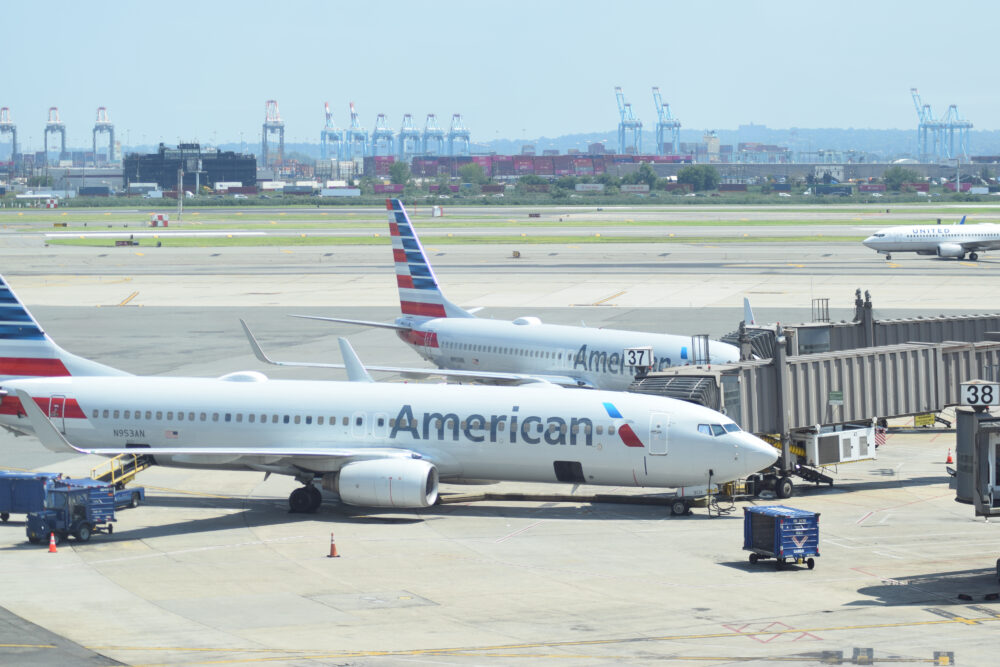FAA Issues Safety Alert After Several Near-Miss Airplane Collisions
The alert stems from several major safety violations as demand for air travel increases amid a spate of industry-wide retirements.

With more than 45,000 flights operating daily in its airspace, the U.S. has one of the world’s busiest and most complex aviation systems. It’s also one of the safest, with the last major commercial U.S. airline fatality occurring in 2009. However, a series of near-miss airplane collisions have occurred on domestic runways in recent years, which could have had catastrophic consequences.
In response to the risk of airplane runway accidents, the Federal Aviation Administration (FAA) issued a new alert this month, urging airline personnel to review safety standards and report all potential protocol violations. The near-miss accidents are especially troubling to industry insiders, as many carriers continue to struggle with staffing issues, while managing a post-pandemic hike in consumer air travel.
Wrong Runway Events and Multiple Airplane Collision Close Calls
A Safety Alert for Operators (SAFO) Report (PDF) was issued on March 22, which outlines several key directives from the FAA to high-ranking airline personnel, including pilots, safety directors, and program managers. Its guidelines to reduce the risk of airplane runway collisions included:
- Utilization of all existing internal communication channels to underline new or existing safety issues
- Adherence to established safety procedures such as flight checklists, air traffic control regulations, and internal carrier protocols
- Observance of “sterile flight deck” standards limiting extraneous crew communication during high workload periods such as takeoff and landing
- Ensure understanding of “crew resource management” (CRM) principles to manage in-flight workload and decrease distractions
A week before the alert was issued, the FAA held an unscheduled safety summit to address six critical runway safety violations reported since January 2023. One such incident occurred at John F. Kennedy International Airport in New York, involved a taxiing American Airlines flight that crossed the path of a Delta Airlines plane amid takeoff, narrowly avoiding an airplane collision by about 1,000 feet.
An even closer call occurred at Austin-Bergstrom International Airport in Texas, when a departing Southwest Airlines flight avoided impact with a landing FedEx Cargo plane by just 100 feet. And at Baltimore/Washington International Thurgood Marshall Airport in Maryland, an emergency vehicle entered the runway area without authorization and nearly clipped a departing Southwest Airlines jet.
Speaking at the safety summit, U.S. Transportation Secretary Pete Buttigieg noted that while the U.S. has an air travel network that ranks among “the safest and most complex system in the world,” the recent runway violations show signs of strain. He urged proactive measures be taken, asserting that “we can’t wait for the next catastrophic event when we can see the warning signs today.”

Did You Know?
Millions of Philips CPAP Machines Recalled
Philips DreamStation, CPAP and BiPAP machines sold in recent years may pose a risk of cancer, lung damage and other injuries.
Learn MoreAirline Travel Is Safe Overall – But Disasters Still Happen
Virtually everyone in the aviation industry agrees that while it isn’t perfect, air travel – especially in the U.S. – is the safest form of transportation.
Statistics have long supported this assertion, but injuries and wrongful deaths still happen. Air turbulence problems also continue to cause numerous injuries every year, and is the leading cause of airline accidental physical trauma.
While fatal airplane collisions remain exceedingly rare, they can and do occur – with devastating results. In 2018 and 2019, two separate Boeing 737 Max jet flights crashed in Indonesia and Ethiopia, killing a combined total of 346 passengers and crew members. Subsequent wrongful death lawsuits accused Boeing of deceiving the FAA about the capabilities of the computer navigation system onboard its 737 Max jets and providing improper pilot training on how to use the system. Boeing agreed to a $2.5 billion settlement in 2021.
Get more articles like this sent directly to your inbox.
"*" indicates required fields





0 Comments